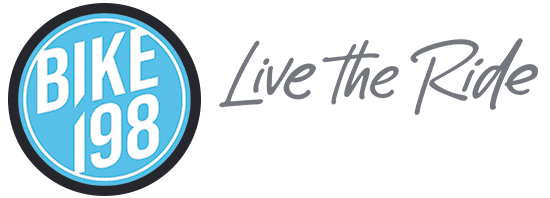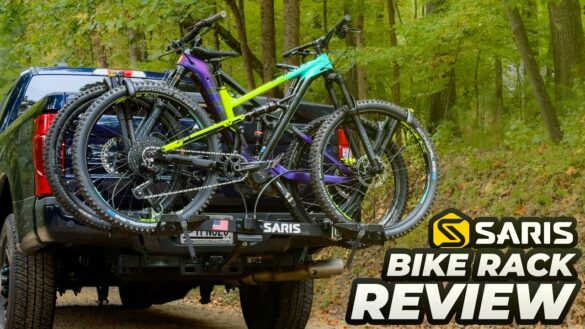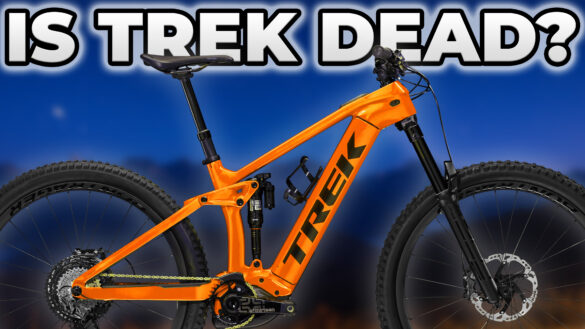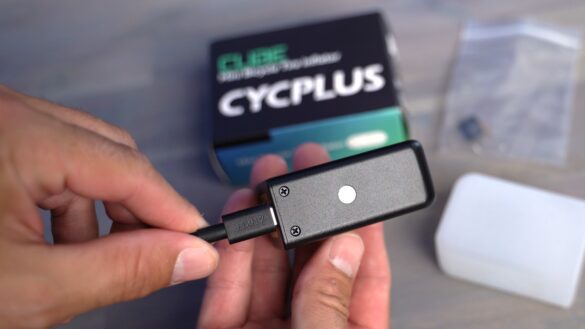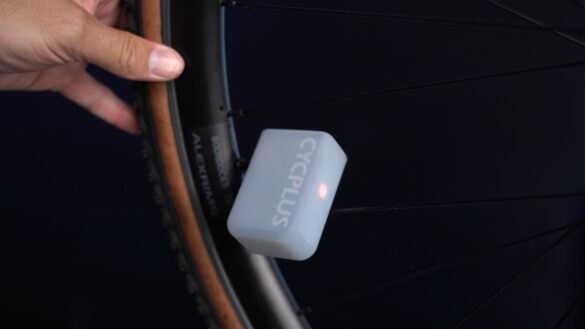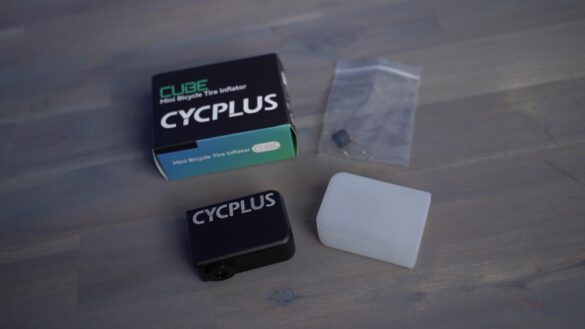Mountain Cycle is not new to the bike industry. For newer riders, this may be the first you have heard of Mountain Cycle, but for those of us that have been around since the late 80’s/early 90’s…Mountain Cycle used to be a household name that graced the cover of magazines worldwide. Mountain Cycle was known for its aggressive designs and burly construction during a time when manufacturers were not paying any attention to the AM/DH market.
More On Mountain Cycle
From the Mountain Cycle website:
Mountain Cycle can best be described as a “Micro-National” in the sense that, we operate on a truly worldwide level, with offices and staff spread around the globe. But we are a small team, just seven full-time staff, who between look after all the operational aspects of the company.
A commitment that we have made, is to be one of the most approachable, best value for money, most rider owned, and most Serious Fun of bike brands.
Mountain Cycle was started in 1988 by Robert Reissinger, a man many claim to be the true father of the modern mountain bike.In an era when MTB’s were still very road bike influenced; rigid steel frames and cantilever brakes – the bike Robert built was nothing short of revolutionary.
The San Andreas was launched with little fuss – but it’s radical, motocross inspired looks, long travel suspension and disk brakes (used for the very first time on a MTB!) grabbed peoples attention and desire.
It is the only bike to be featured in the Museum of Modern Art as a shining example of modern design. As a company MC fared less well, eventually Robert transferred ownership to Kinesis (the Taiwanese frame factory) but this marriage too was short lived.
Finally in 2006/7 – Mountain Cycle found a new home, after being bought by large Taiwanese company Ideation Industrial.
With experienced, passionate staff again running the brand, the History Continues…
Mountain Cycle’s current line consists of the Rumble (HT), Fury (5″ Travel), Battery (5″ Travel Slopestyle) and Shockwave (9.5″ Travel). As you can see by their lineup, they are very AM/DH oriented in their approach to the mountain biking industry.
The Mountain Cycle Fury
The Mountain Cycle Fury is the 5″ travel cross country/all mountain bike out of the MC stable.
From the MC website:
- Tube/monocoque mainframe with full monocoque swingarm
- Super-stiff full monocoque Swingarm
- 5 inches of tunable, progressive travel
- Optimized pivot location for exceptional pedaling and sprinting
- Dropped Top Tube for reduced standover height and increased maneuverability
- Continuous cable routing
- MSRP – est. $960.00 US
As you can already see by the photos, this bike has a very unique look. The tube/monocoque frame design is unlike anything else on the market. It can be shipped with several different flavors of rear shocks ranging from Fox Racing to Marzocchi.
The Build Kit
The Mountain Cycle Fury is available as frame only with rear shock. This build kit was put together for review purposes only. Look for full build kit options in 2009, but those kits have not been finalized yet.
- Frame: Mountain Cycle Fury 5″ – Large/Black
- Fork: Rock Shox 454 Coil U-Turn (95 – 140mm)
- Shock: Marzocchi Roco TST R (7.875 x 2.00)
- Stem: Thomson X4 70×0*
- Seatpost: Thomson Elite 27.2
- Crankset: Truvativ Stylo 2.2AM – 32/22
- Brakes: Avid Juicy 7 (185F/160R)
- Shifters: SRAM X.9 Triggers
- Rear Derailleur: SRAM X.9 Medium Cage
- Wheelset: Hope Pro II Hubs on Stans Flow Rims (20mm front and 10mm rear)
- Tires: Maxxis Aspens 2.25 and Kenda Nevegals 2.35
- Pedals: Shimano XTR
- Chain: SRAM
- Cassette: SRAM 990
- Front Derailleur: SRAM X.9
- Headset: Cane Creek 110 Black
- Saddle: SDG Fly C
- Bar: Kore Elite
- Grips: Ergon GP1 Small
- Misc: Full Length Cable Housing
- Weight: 31.26 lbs. on a Ultimate Support Alpine Digital Bicycle Scale
Mountain Cycle Fury Geometry Specs
More Notes On The Fury Frame
- Straight out of the box, the Mountain Cycle Fury looks stiff.
- The rear shock attaches to the swing arm via a 4 bolt mounting plate.
- Cutting the seat post will be necessary with the interrupted seat post design.
- Full length housing is recommended with the downtube routing.
- Overall build quality is excellent…all the way down to nicely stacked welds.
How Does The Mountain Cycle Fury Ride?
I know…enough of the techno talk…how does this 5″ travel frame ride? Here is everything broken down…
Good Mountain Cycle Fury
First the good news: The 70 degree head angle and Marzocchi Roco TST R made the Mountain Cycle Fury a very capable climber. There was very little pedal induced bob with the platform engaged, and Marzoccchi’s multi position platform is a perfect match with the single pivot suspension design. The interrupted seat tube design allowed for easy adjustment of the platform while riding, so changes were made quickly without much effort. The Fury felt stable in technical climbing situations without any serious wandering. The rear end tracked very well, and the bike was comfortable for long epic climbs.
The bike does not feel like a 30+ lbs. rig, and the front end was easily lifted over obstacles. Overall…this bike climbed very well and I believe a lot of this had to do with the overall geometry of the frame…most importantly…the 70 degree head angle.
I took this bike on several long North Georgia epics and it did great as an all day bike. The Mountain Cycle Fury was light and nimble while still having the stiffness require for the super tech. It was fun to drop the seat and whip this bike around. The shorter wheelbase and steep head angle made it a fast, nimble turner. Tight, twisty single track is where the frame really shined. If you are used to trails that require fast, tight turns (like or tree infested single track), this could be the bike for you. Stiff overall design with fast steering…
Bad Mountain Cycle Fury
Everything can’t be perfect: The steep head angle (as compared to other bikes in this category…69 – 68.5) made the Fury a little twitchy on fast, technical descents through the rocks. This same head angle is what made the frame climb like a mountain goat, so this tradeoff was to be expected.
The frame originally shipped with a Fox RP23 rear shock. The single pivot suspension design of the Mountain Cycle Fury does not perform as well with the non-piggy backed rear shock. I would recommend that you stick with a Marzocchi Roco TST R or Fox DHXa for the best results. Ideally, I would stick with the Marz…it seemed to perform much better than any of the other DHXa’s I have tried in the past.
Under hard braking at speed, the rear suspension gets the typical single pivot stiffening. It gives you a ramping up feeling as you are braking, but then lets loose out of the brakes. This feeling is pretty normal amongst single pivot designs and many riders use a floating brake mechanism to relieve it.
The interrupted seat tube design does limit seat post travel, but more importantly…it puts the rear shock right in the line of fire for mud and debris. A small fender (like the one Specialized uses) is almost a must to insure long seal and rear shock life.
Final Thoughts On The Mountain Cycle Fury
Overall, this bike is a very cable all day ride. As long as it wouldn’t screw with the geometry too much, I’d like to try the Fury out with an adjustable travel, 160mm fork like the Rock Shox Lyrik for Fox 36 Talas to slacken the head angle out slightly. With the addition of a longer fork, I think the bike would descend a lot better without any real loss in climbing…especially with the adjustable travel. I would also recommend investing in an adjustable seatpost (Gravity Dropper, Speedball, CB Iodine) to help with the interrupted seat tube design.
The Good News
- Climbs like a mountain goat.
- Respectable build weight for a stiff chassis 5″ travel bike.
- Incredible value for a very well built frame.
- Great for all day epics.
The Bad News
- Interrupted seat tube design limits seatpost travel.
- Rear shock is in the line of fire for dirt and debris.
- Steep head angle takes away from downhill ability.
- Suspension stiffening under braking.
Notes from Mountain Cycle
Click Here to see what the crew at Mountain Cycle had to say…
Still Shots by rsutton198 | Action Shots by regularjoe
